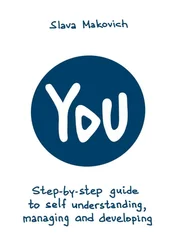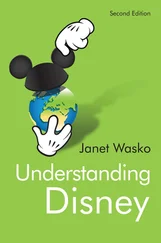As mentioned, I have a thing for golf; thus, golfing examples clearly have a special resonance for me.
Yes, I am taking liberties with John Steinbeck’s famous book title.
This section on Tiger Woods reopened a wound for me and was a bit difficult to write. Ever since I turned forty, I have been obsessed with golf, a game I played in my childhood, let slide in my twenties and thirties, and then recently returned to. So, since midlife, I have played a lot of golf and watched a ton of it on TV. My obsession reflects, perhaps, a bit of the energy of a midlife crisis channeled into this (harmless?) indulgence. Thus, I think I have used golf as an escape from my regular work life as a sexologist, which, of course, was filled with sex. Basically, I needed an escape, and golf was a good one, as it was totally removed from sex. Is there anything less sexy than golf? (Maybe a few things, but not many.) However, after the Tiger Woods sex scandal, my two worlds—sex and golf—collided, and now I can’t play golf, or watch it on TV, in the same way. Alas.
The paragraph above is not meant to imply that I believe such a public apology was necessary, either from a therapeutic perspective or because it was morally right to do so given his behavior. It is also not meant to imply that I believe that Tiger Woods has an “addiction,” which, by the way, many sexologists believe is not an appropriate name for sexual problems. I am also not necessarily implying he had a “sexual problem.” (Given his cover-up of his affairs to his wife and her reaction to them when they were revealed, however, it is clear to me that he had a relationship problem.) Rather, this story is merely meant to give a context for why this event occurred.
I am picking on Tiger Woods about his excessive use of the world’s resources, but I could have chosen countless examples of excessive resource use in people, including myself, whose middle-class Western lifestyle (including my golf) is also open to criticism.
My language here (e.g., gay genes compete ) is teleological; it suggests that genes have intentions, motives, or a purpose. Evolutionary types would be mad at me, as genes don’t have these characteristics; that is, genes themselves don’t “compete” for anything. So, to all you evolutionary types, please excuse my loose language, as I am using it in this way to help illustrate a point.
Note that the most important reference/source for understanding and diagnosing mental disorders in North America is the Diagnostic and Statistical Manual of Mental Disorders ( DSM ). Clinicians view it as their “bible.”
This is assuming, of course, that we can agree on the definition of an interpersonal impairment.
Whether someone with low arousal should be construed as having a disorder (especially if he or she has no distress about it) is, of course, another issue to consider.
It is important to remember that many asexuals do not masturbate and/or have no fantasies (or at least no consistent theme in them), and hence do not have a paraphilia (see chapter 5 on masturbation).
Although I think this discussion on paraphilias is important, it must always be remembered that some masturbating asexuals do not direct their sexual responses to anything, or they direct their masturbation to situations or objects in a more or less random way, and still others do not masturbate at all (see more in chapter 5 on masturbation).
Automonosexualism might still retain the characteristic of a lack of sexual attraction to others, but, technically, there would still be a sexual attraction to someone, even if it were only to oneself. Thus, automonosexualism is not a case of asexuality using the strict definition of “lacking a subjective sexual attraction.”
Of course, if we were an asexual species, our bodies would be radically different, particularly the genitals and secondary sex characteristics (see chapter 3). Thus the depiction of the nude human body in art would also necessarily be different. But indulge me here and assume that our bodies would be the same as they are now, as this exercise partly concerns how a sexual species with an elaborate culture, like ours, creates products infused with sex.
Therefore, my view would be similar to those of numerous (and even more biologically oriented) theorists who have written on the intermingling of biological tendencies and culture. These theorists often do not pull punches and are upfront about biology, or at least biological processes, taking the reins of the cultural horse, by offering such titles as Genes, Mind and Culture: The Coevolutionary Process (Lumsden & Wilson, 1981) and Culture and the Evolutionary Process (Boyd & Richerson, 1985). Richard Dawkins has also argued (e.g., in The Selfish Gene , 1976) that cultural ideas, like genes, are “selected for” (like Darwin’s natural selection) if they have a special resonance with people in a given time or place. He calls them “memes,” and, yes, it is probably no coincidence that this word sort of rhymes with “genes.” Note, however, that by suggesting a similarity between my view and these biologically oriented theories of culture, I don’t mean to imply that all of our wishes, desires, and preferences are fully biologically determined. They are not.
There is some evidence that defensive processes can be involved with eating habits and disorders (Poikolainen, Kanerva, Marttunen, & Lönnqvist, 2001).
Even if one agrees that taste preferences are influenced by “sex” hormones, does this mean that “sexuality” causes these food preferences? For example, one could argue that the true sexual connection here is indirect at best, because these sex hormones influence food preferences through their effect on biological sex/gender, and not through their impact on “sexuality” per se. Thus, am I conflating sexuality influences with prenatal hormonal influences on biological sex and gender? Perhaps. As mentioned in chapter 6, however, sex and gender are so intertwined with sexuality, and vice versa, that to argue that only sex/gender (completely independently of sexuality) is a significant influence here is misleading. Also, given that these hormones vary across the menstrual cycle and evidently have an impact on food preferences, they are not just acting to cause “prenatal” sex/gender differences but also likely relate to day-to-day adult activities, including sexuality.
Some animals may have a form of rudimentary laughter (e.g., “proto-laughter” of chimps), or at least show some of the evolutionary physical precursors to laughter, such as excited and rhythmic physical behaviors (e.g., tail-wagging in dogs) (Eastman, 1936). There may also be some precursors of the often “rule-bending” element of humor in the play fighting of animals (Gervais & Wilson, 2005; see also later in this chapter).
It is popularly believed and has often been stated—in the Bible, in the popular media, and so on—that laughter is “good medicine.” The implication of this widespread belief is that it must have evolved because of its physical health benefits. However, some theorists suggest that laughter’s direct health benefits are minimal, or at least not yet sufficiently demonstrated. Instead, humor evolved because it had “social” benefits, easing social tension and allowing for smooth navigation among our fellow humans (Provine, 2000), and any health benefits are indirect and work through these social benefits (e.g., social support).
Читать дальше












